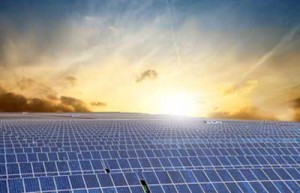IDR Blog
Solar power can be for India what shale is for the US
The new government has unfurled plans to build 100 gw of solar power by 2022. Here are a few suggestions to execute this grand vision:
First, it’s time the general perception that solar energy is expensive is removed. India gets 70% more solar radiation than European countries. This means the same solar panels yield 70% more power in India. In addition, peak demand in India coincides for 70-80% of the time during which solar energy is harnessed. This peak demand is mostly met by diesel, which costs almost double that of solar electricity, currently at Rs 6-7 per kWh.
…when we commission a solar plant, it will displace diesel for 70-80% of its generation and imported coal for the rest.
So, when we commission a solar plant, it will displace diesel for 70-80% of its generation and imported coal for the rest. At all times, solar is substituting for imported energy, which is far more expensive.
Second, adequate capital should be raised without crowding out investments in other sectors. The proposed 100 gw capacity requires about $125 billion, of which $90 billion will be debt financing. The global financial crisis has created a great opportunity for availing cheaper credit from global markets. As per International Energy Agency (IEA) estimates, green energy will receive almost 60% of the $5 trillion expected to be invested in new power plants over the next decade. Solar’s requirement is less than 2% of this amount.
The Holy Grail of successful financing is effective allocation of risks between different stakeholders — in this case the consumer, the investor, central/state governments and the developer. The development cost and schedule risk are best borne by technically competent solar power developers once a power purchase agreement (PPA) is signed with a state electricity board (SEB). The developer is in the best situation to procure land, negotiate for panel prices with investors and execute the project expeditiously.
Fortunately, solar power requires far fewer clearances than for coal and doesn’t require contiguous land. The government should put a 25 mw per bid floor to ensure technical and financial competence of the bidder.
Any action by government to reduce interest cost will reduce the cost of solar energy and accelerate its adoption.
A big part of solar energy costs is the cost of debt, since fuel costs are zero and operational costs are minimal. Any action by government to reduce interest cost will reduce the cost of solar energy and accelerate its adoption. A foreign lender will view depreciation of currency as a risk since the tariff is designated in rupees and will want to be compensated for that higher risk.
The government/RBI should mitigate that risk away from foreign lenders. This potentially has no cost to the government/RBI since implementation of solar energy will contribute to the appreciation of the rupee. This is because we estimate forex savings of more than $500 billion over a 25-year period from the commissioning of 100 gw solar power and substituting the use of diesel and imported coal.
The developer is incurring a major portion of costs in dollars, but is shielding the consumer from rupee depreciation risk by designating the tariff in rupees. Solar investments’ dollar economic internal rate of return to the Indian economy is in the high teens while the borrowing of debt could be only at 5-6%. The economic surplus from each project is transferred to and aggregated in the larger Indian economy. Hence, the role of the RBI and government is perfectly justified and is crucial in achieving this grand vision.
If developers can avail of the debt in rupee at 5-6% — i.e. at the same interest as that of international dollar denominated debt, they can provide solar power at less than Rs 5/kWh, and that too with no escalation in future. They also don’t strain the domestic banks and can raise all the debt abroad.
…the government needs to ensure reliable and cost-effective energy supply to ensure making the ‘Make in India’ programme a resounding success.
The government can easily raise about $15-20 billion per annum over the next five years from external sources including NRIs, multilateral agencies, development banks, sovereign wealth funds and lend directly to projects once the PPA is signed up. This will also accelerate development of solar projects since raising debt financing for individual projects can consume a lot of resources.
One must also ensure reliability of cash flows from solar projects. There are substantial credit risks which hound the power sector due to the deteriorating credit profile of the SEBs and the lax enforcement of the renewable purchase obligation (RPO) mechanism. The state government needs to backstop the PPAs with the SEBs and ensure strict compliance of the RPOs.
The Centre should provide a guarantee that if states/SEBs do not pay their solar developer in time, they will step up and take it out of allocation to the states. Only those states that sign up for this programme should be entitled to the foreign exchange risk covered by the central government/RBI and avail of cheap solar power.
The benefits of tapping into our own clean energy source are unmatchable from an energy security viewpoint, climate change mitigation, adoption of future-proof technology and developing quicker power sources, generation of employment accelerating our growth rate. There is little doubt that the government needs to ensure reliable and cost-effective energy supply to ensure making the ‘Make in India’ programme a resounding success. There are few initiatives so impactful and so easily doable for our country. Solar can be the shale equivalent of India.
Courtesy: Economic Times
Post your Comment
3 thoughts on “Solar power can be for India what shale is for the US”
 Loading Comments
Loading Comments





70to 90 % of new power produced in future must be from sun , wind ,and coal , nuclear energy must must not be allowed to grow rapidly . each household, society , building , school ,hospital , market , shops , workshops, factories must be encouraged to put up solar panels and small plants so that diesel and coal are slowly decreased and finally abolished in next 20 to 30 years . Indias potential for wind solar must be harnessed to the maximum and newer technologies from america , france , germany imported and technology transfer done for solar panels of higher effeciency . plants must be set up in all states and made to compete for the maximum green power .
sir please put the article or a gist of it on the mygov.in website of the PM of india.
I HOPE STRONG AND GOOD PM NARENDRA-MODI READ AND ADOPT THIS ARTICLE KNOWLEDGE IN GOVERNANCE IMPLEMENTATION PROCESS 1+V JAI-HIND BEST-INDIA